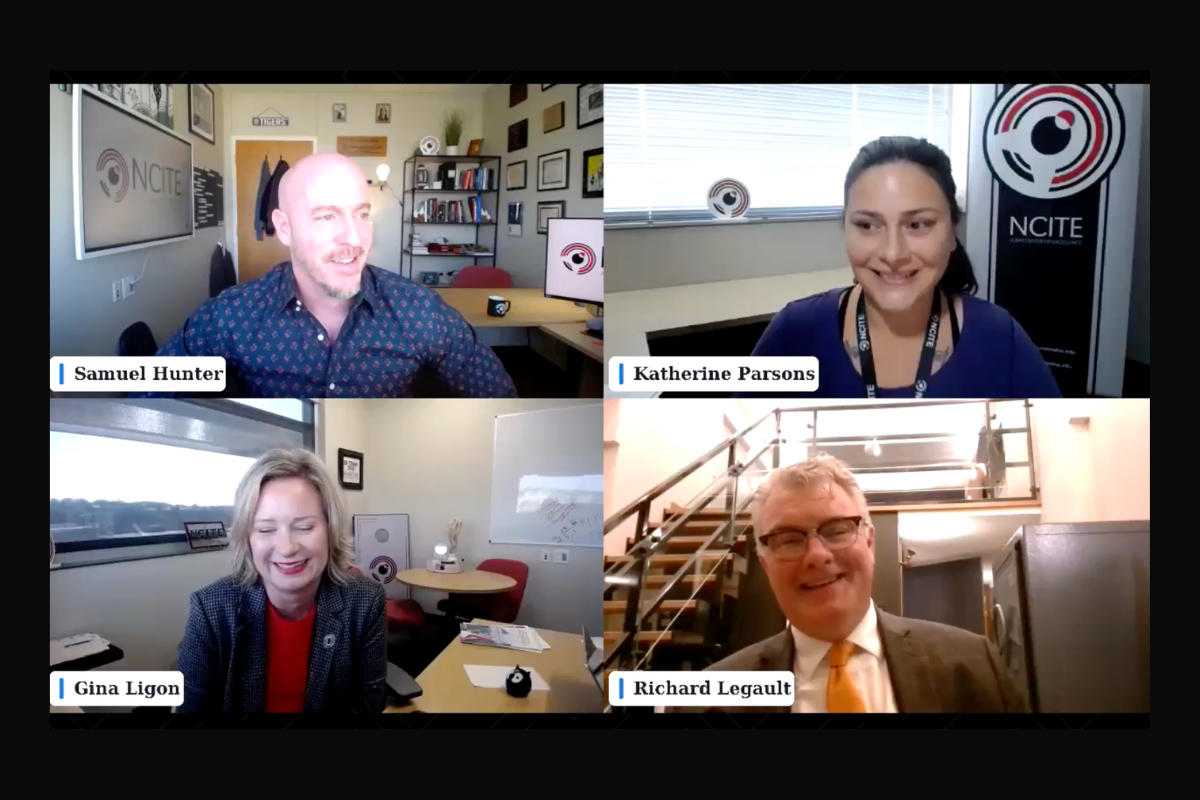WEBINAR RECAP: Avoiding Failure of Imagination – Protecting Against Novel Threats
On Sept. 19, NCITE hosted a webinar discussing new research that addresses how to protect individuals and organizations from unexpected threats. Panelists were NCITE's Sam Hunter and Kat Parsons, and Rik Legault of the U.S. Department of Homeland Security.
- published: 2024/09/20
- contact: NCITE Communications
- phone: 402.554.6423
- email: ncite@unomaha.edu
- search keywords:
- novel threats
- threat assessment
- targeted violence

On Sept. 19, NCITE hosted a webinar discussing how to protect individuals and organizations against novel threats. Panelists were:
- Rik Legault, Ph.D., senior advisor, U.S. Department of Homeland Security
- Samuel Hunter, Ph.D., head of strategic initiatives, NCITE
- Kat Parsons, Ph.D., research associate, NCITE
Key Takeaways
- Predicting malevolent action is a major challenge. In her opening remarks as moderator, NCITE director Gina Ligon, Ph.D., cited research from CNA and the National Consortium for the Study of Terrorism and Responses to Terrorism (START): 61.5% of perpetrators of mass casualty violence and terrorist attacks in the U.S. were known by prevention professionals before the attack took place. “The issue is not about knowing who the threat actors are,” Ligon said. “It’s being able to predict what they are going to do.”
- Threat assessment tools have an empirically proven value. Members of Hunter’s research team reviewed 1.3 million data points, over 2,000 studies, and 23 meta analyses, coming to the “cautiously optimistic” conclusion that such tools are useful in the hands of practitioners.
- There are three chief impressions from the research with tool users:
- Many tools can be applied for multiple purposes. Hunter and his team interviewed practitioners from DHS, the Department of Defense (DoD), other agencies about what tools they used. “The same tool would be used for different purposes either by the same individual or across units and departments,” Hunter said.
- There’s a strong need for training on tools and significant access barriers. “There’s cost issues there, there’s travel issues, there’s time away – if you’re the only person in the department that’s focusing on threat and risk assessment, spending a couple days away to get training is difficult.”
- There’s a call for universal standards for threat assessment. “There’s room to provide some of those guidelines with regard to tool usage and interpretation, to provide this common infrastructure and way to talk about these things,” Hunter said.
- We often rely too heavily on reactive rather than preventative responses. Parsons said that while investment in computer systems to flag threats is essential, an overreliance on this technology fails to prevent and address root causes. Legault emphasized that there is a shift in the practitioner space toward understanding “the cognitive and behavioral indications” of individual perpetrators and how they can be used to predict future violent acts.
- The rarity of novel threats makes them difficult to study. “The vast majority of our data is derived from people who actually were successful at doing some heinous act,” Legault said, emphasizing that such acts are still statistically uncommon.
- Promoting team psychological safety is essential. “The one thing that kills agility in leadership is creating an environment where people are scared to bring bad news to the forefront, or they’re scared to ask questions,” Legault said. “You can’t manage your way out of that.”
- Hunter said that prevention team leaders have to model collaborative behavior. “A leader has to be vulnerable,” he said. “One of the most effective ways that I’ve seen is when a leader talks about the mistakes that they’ve made … you now make it okay to talk about some of the more challenging and difficult things from those around you.”